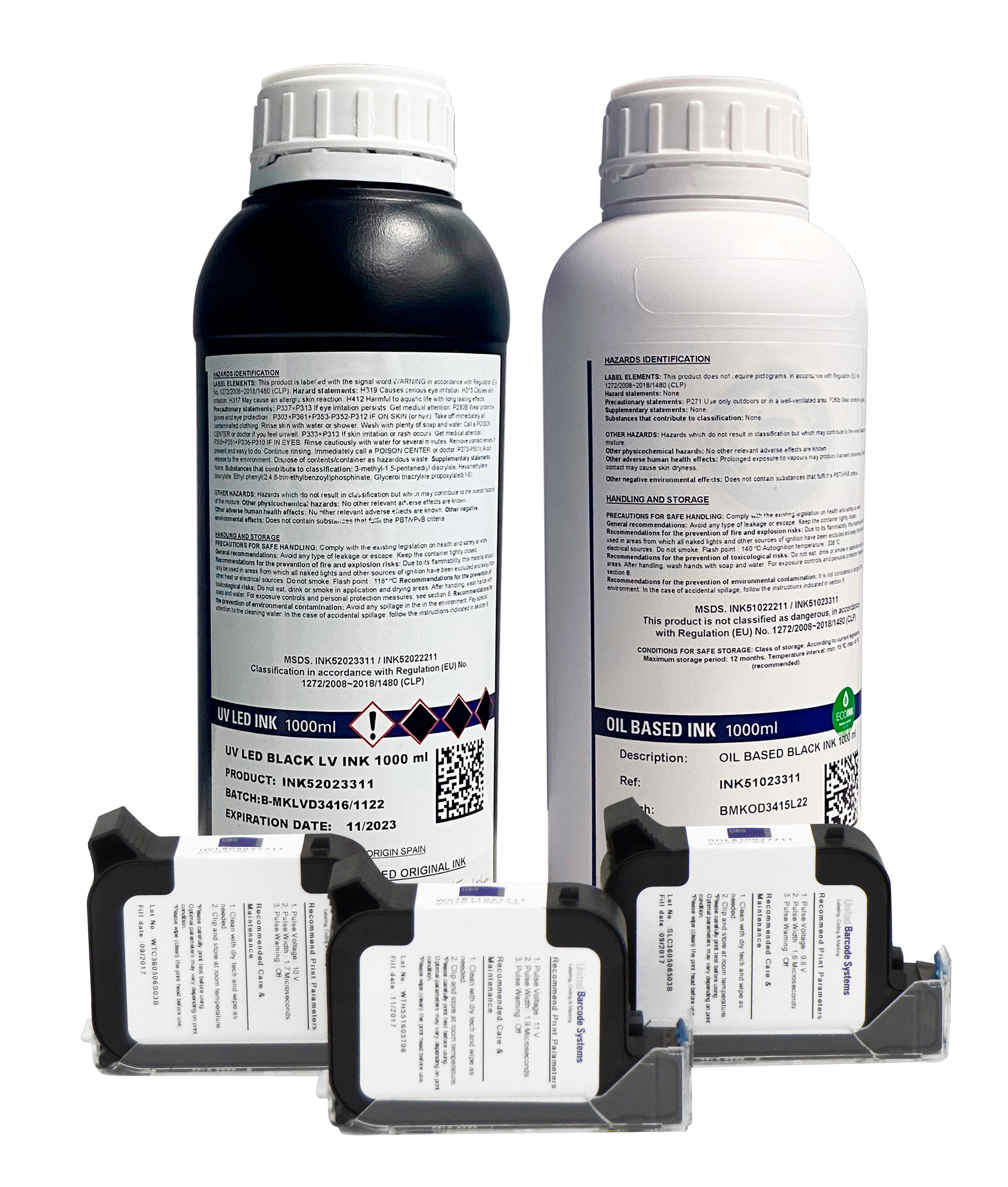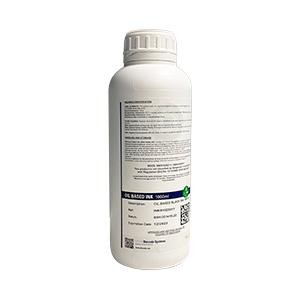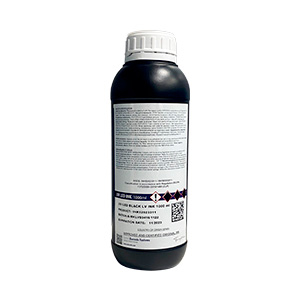In bottle or cartridge format. UBS inks guarantee the best resolution and quality in packaging printing. Our team of chemical engineers has created the perfect mixtures for our printers, capable of optimizing consumption and adapting to the needs of each client. Depending on the material and the characteristics of the printing surface, a specific type of ink will be the best suited. Before looking through the UBS catalog, we will break down the common characteristics shared by all the different products.

All UBS inks are free of glycerin and dispersants of animal origin. Also, none of the formulas contain NVC, ITX or pyrrolidones. The first is a toxic substance when inhaled, which can cause damage to the respiratory tract. ITX is a photoinitiator that can contaminate food through migration, while pyrrolidones are cyclic resins that can be poisonous if inhaled or ingested. At UBS, we avoid using substances of this type that can be toxic to humans.
In addition, both oil-based as well as water-based and solvent-based inks have an optimized stability of the viscosity and surface tension parameters. All of them also guarantee maximum contrast in colorimetry. Another essential factor that characterizes our products is their low migration, which is especially relevant in the printing of food product packaging.
Inks in bottles
In the bottle container, UBS offers oil-based inks or UVLED inks, specific for this type of printing technology.
Oil-based inks
Oil-based inks are especially recommended for box coding, as they can be printed on all types of porous substrates. The ECO formula for this type of colorant makes them suitable for the recycling of corrugated cardboard, which helps protect our environment. They are available in 1,000 ml format. They dry instantly and are odorless. They can be applied in black, red, blue and green, among other colors. They should be stored at a temperature of between 50ºF and 86ºF in a dry and clean environment.

The oil-based inks can be applied to the entire range of APLINK printers. They are resistant to deformation and extreme temperatures. In addition, they do not contain volatile organic compounds, which can easily become vapors or gases.
UVLED inks

UVLED inks are specially designed to be applied with this type of technology, present in various ranges of UBS printers. Thus, they are suitable for both product and box coding, as they can be printed on any type of material.
They are sold in 1,000 ml bottles and in the same colors as the oil-based inks. They dry instantly by polymerization and do not contain volatile organic compounds. The mechanical behavior is uniform and the ideal storage conditions are between 50ºF and 86ºF in a dry and clean environment.
Cartridge inks
Just like the bottled inks, the inks in a cartridge format are available for UVLED technology. In addition, there are the classic water-based inks and the HP 2.5 solvent-based inks. Both types are available in black, as well as other colors upon request. They come in 40 ml containers.
HP 2.5 solvent-based and water-based inks
Water-based cartridges can be applied to any type of porous substrate. Thus, they are specially designed for the coding of cardboard boxes. Those made from solvents, on the other hand, are suitable for all types of surfaces. While the former dry instantly, the solvents have a quick drying time, which varies depending on the surface to which they are applied. They require a higher temperature than bottled inks, between 68ºF and 86ºF.

2.5 UVLED inks

Just like the UVLED inks in bottles, the cartridge inks can be applied to any type of surface: glass, cardboard, paper, wood, metal, plastic, painted materials... The polymerization process causes them to dry instantly and they should be stored in a clean, dry place at a temperature of between 68ºF and 86ºF.

